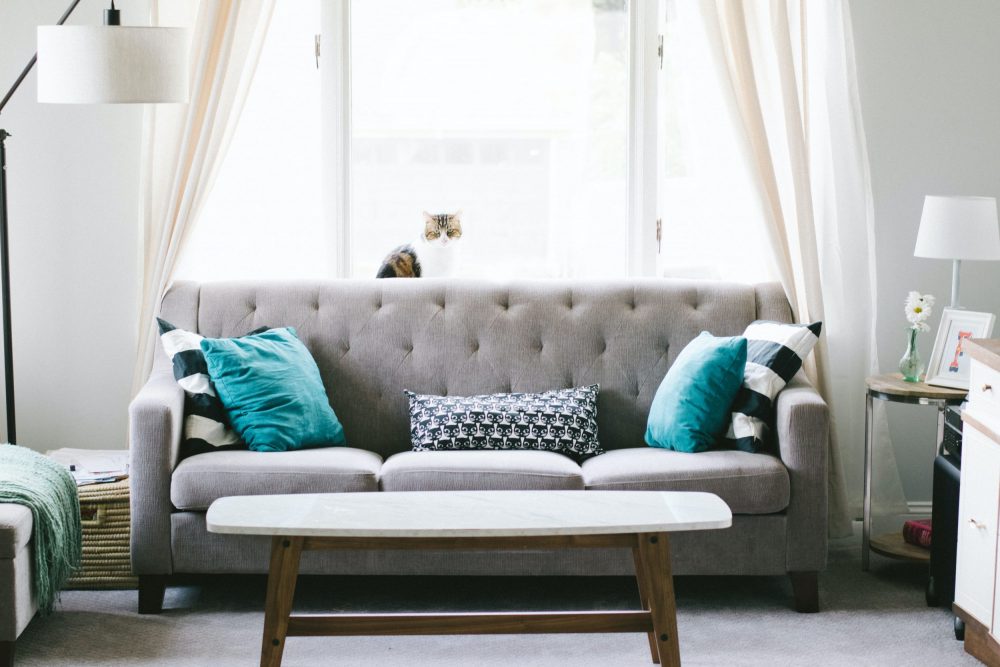There’s few things more annoying than dusty mantelpieces, filthy furniture or contaminated carpets.
Those pesky dust particles seem to appear all over the place; a crummy colony that will settle in any room, in any home.
At times it might feel as though you’re fighting a losing battle in your attempts to defeat the dirt.
So where does it all come from? Well, there are many things that contribute to this problem.
From dirt, skin cells, pollen, hair and fabric fibres – to pollutants in the atmosphere – dust takes on many guises!
I clean all the time but my house is always dusty… Why is this happening?
Microscopic dust particles are the uninvited guests that always seem to overstay their welcome.
Every homeowner, irrespective of the size, type or location of their property, faces the same battle for a dust-free residence.
There’s a simple explanation as to why it feels as though you’re always coming second best when attempting to get rid of the grime.
Combinations of particles gather from both indoors and outdoors, collecting in the air before settling on objects.
That’s why the blanket of dust that covers surfaces is merely part of the problem – airborne molecules are preparing for landing the second your duster and polish go back into hiding.
It’s an endless cycle, but persistence will eventually pay off.
The 10 main reasons your house is still dusty after cleaning
- Dirty Air filters. Air filters in heating and air conditioning units are a meeting place for all kinds of dirt and grime. Changing them on a regular basis will limit the build-up of dust, and cleanse the air in your home.
- Neglected electronics. You should always pay special attention to the electronic devices in your home when embarking on a cleaning spree. Floating particles are attracted to TVs, computer screens, consoles, tablets, laptops etc, so it’s important to keep them squeaky clean.
- Unwashed bedding. Dust mites, dead skin cells and pet dander are the most common elements found in your bed. Starting a cycle of weekly washes for your sheets, duvet covers and pillow cases will help reduce the amount of contaminants in your rooms.
- Soiled shoes. Up to 60% of dust molecules in your homes are actually derived from the outdoors. That’s hardly surprising when you consider everything that you and your footwear encounter when moving from ‘A’ to ‘B’. The aforementioned percentage can be improved drastically if you remove your shoes at the front door.
- Feather-dusting fables. Polishing your homes with feather dusters isn’t actually conducive for achieving optimum cleanliness. This cleaning technique simply releases particles back into the air and allows them to settle elsewhere. An alternative solution is to use a damp cloth, or apply a cleaner/polish, to trap the dust, resulting in shinier surfaces.
- Disorderly dusting. This suggestion might seem quite obscure, but having some structure to your cleaning can make a significant difference. Operating from top to bottom will eliminate far more fragments than if you were to attempt your dusting in reverse. This method will alleviate any risk of dust from higher places relocating to spots that you’ve already cleaned.
- Out of sight, out of mind! Don’t miss a thing. Dust doesn’t discriminate; it’ll settle in all kinds of weird and wonderful places that may not be visible to the naked eye. Desks, tables, window sills and book shelves are all common places that are quite easily detectable. Blinds, light fittings, and the tops of doors, cabinets and cupboards, are all out of sight, but they shouldn’t be out of mind.
- Unclean carpets and floors. Outdoor pollutants can get easily entwined in your carpets when walking from room to room. Removing footwear, when moving indoors from outside, as mentioned earlier, goes some way to reducing the particles that accumulate. Homeowners are also advised to invest in a high-quality vacuum, preferably with a HEPA filter, to help remove dust from carpeted floors. Making a habit of vacuuming regularly will simplify the process of carpet-cleaning. Alternatively, hardwood floors are much easier to maintain.
- Too much clutter. Too much clutter not only makes your home look untidy, but it provides an all-too convenient hiding place for dust to settle. The more organised your house is, the less places there are for dirt and debris to set up camp.
- Grooming pets and pest control. If you have animals in the house then they’re likely to shed tiny flecks of skin, known as pet dander. Maintaining your pets appearance, ensuring that they are all well-groomed, will reduce the risk of dust and dust mites in your home. Similarly, when it comes to unwanted guests, such as shelter-seeking insects, it’s important to stay vigilant.
The importance of cleaning for a viewing prior to sale
Dust-busting missions in a bid to keep your homes looking spick and span can feel like quite a chore.
However, getting into a routine of regular upkeep can make the process feel considerably less overwhelming.
Keeping your home as dust-free as possible requires care, consistency, a little commitment and patience.
Take pride in your property. Check every corner, every crevice, dust the highest points, and the lowest, leaving no stone unturned in your mission to beat the grime.
Regular and thorough cleaning will improve the air quality in your home and keep you, your family and any guests happy and healthy.
If it comes to selling your home, and making a good first impression, we recommend finding ways of ensuring the air is as pure as possible.
Open windows and utilise fans in order to circulate fresh air around your home or even invest in an air purifier to eliminate airborne pollutants.

